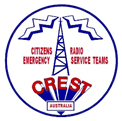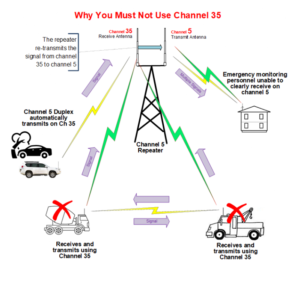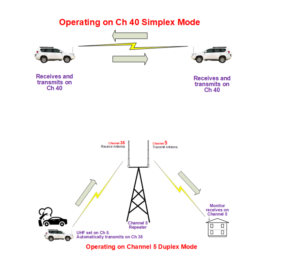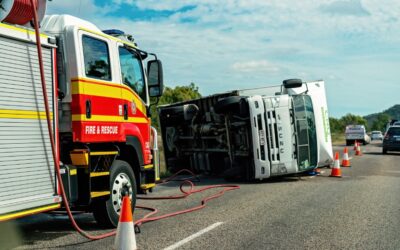Using your radio

There are two types of CB radio available to the general public, which operate on different frequencies.
- UHF – this stands for ‘Ultra High Frequency’. It usually is used for short range communications. Up to 5km – maybe more on long flat terrain.
- HF – and this stands for ‘High Frequency’. This type of radio can be used for short and longer-range communications. Up to 25km (or depending on special conditions, inter-state or overseas).
As a general rule, the lower the frequency, the greater distance a radio signal can travel. Both types of radio have advantages and disadvantages. For a more in-depth understanding of these advantages and limitations, see the links provided on this page.
Antennas
When it comes to antennas there is a saying amongst radio enthusiasts which is “Height is might”. This means the bigger and taller your antenna, the better your radio will work. So if you have an antenna mounted on the bull-bar of your vehicle, and another vehicle has their antenna mounted on its roof – all other things being equal, their radio will work better over a longer distance. Of course there is always a trade-off with height – it’s not much good having the highest antenna if it suddenly gets snapped off by a low hanging tree branch!
How Your UHF Radio Works
Firstly, you will need to understand some terminology used to describe how your radio functions:
Simplex operation means the radio stations are communicating with each other directly, on the same frequency. Both stations take turns transmitting and receiving on the same frequency with no repeater or other device in between.
Duplex
In this mode, a UHF repeater operation uses two frequencies, channel 5 (which is the repeater receive frequency), and channel 35 on which the repeater retransmit the signal.
When the UHF CB is in duplex or repeater mode, all this switching between frequencies is automatically managed for you – you simply need to be on channel 5 in the right mode.
This is why it is imperative that other CB users do not transmit directly on channel 35, otherwise their transmissions are rebroadcasted directly to Channel 5, thus potentially interfering with emergency transmissions.
When I need assistance, how do I contact someone?
Each UHF radio can transmit in Simplex or Duplex mode (see details below). Your instruction manual will explain how to switch between these modes. In an emergency, try requesting help on UHF Channel 5 in duplex mode. Where there isn’t a repeater station within range, you can try requesting help in simplex mode on the same channel. Some CREST monitors who operate in areas where there is no repeater, monitor using simplex mode.
For more information on requesting emergency assistance, click here.
Be aware that there are limitations to the monitoring service. Even with the best intentions, Crest and other volunteer organisations do not monitor the emergency frequencies 24 hours a day, 7 days a week, 365 days a year. Also, there may not be a monitoring person within range of your location.
Related Articles
Related
Community Support
How we support the communityCrest SA is authorised to...
Reporting an emergency
Reporting an emergencySpecial Note Depending on where you...




